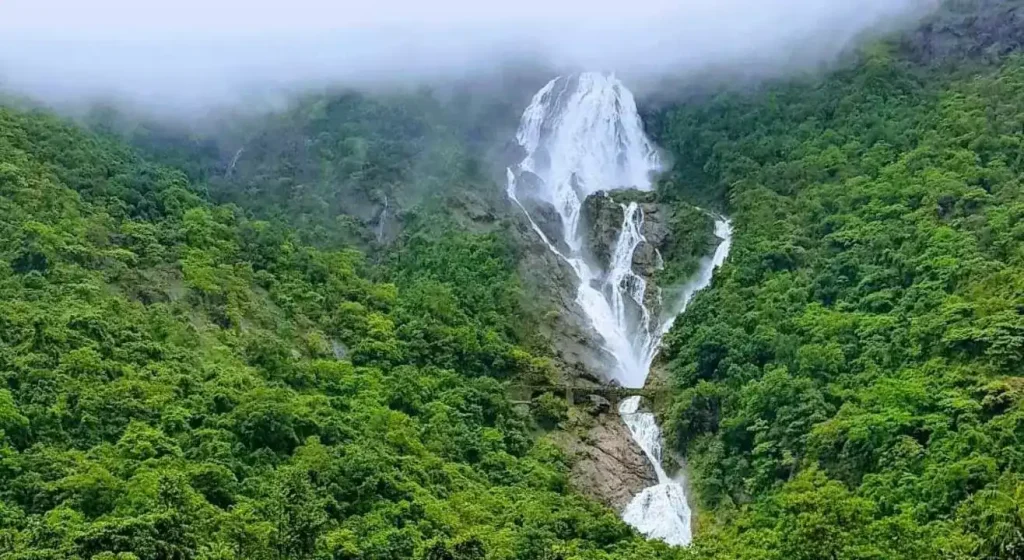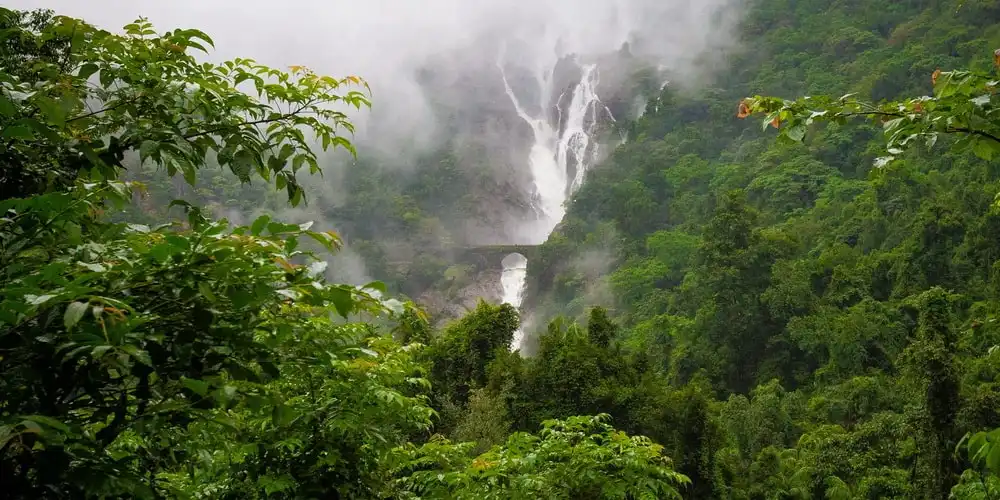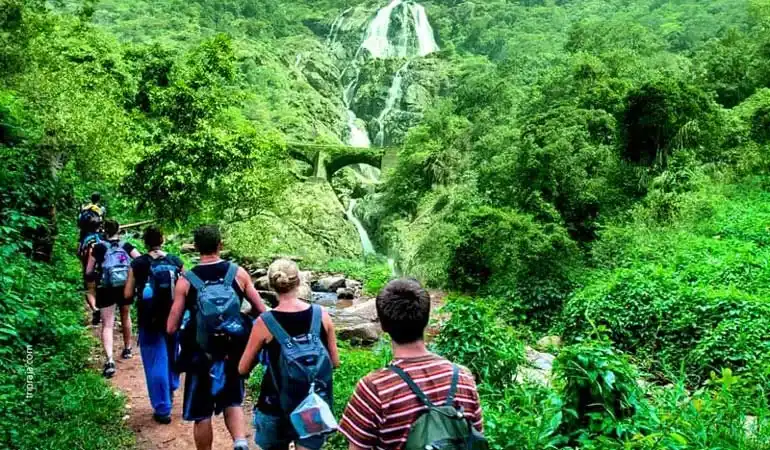Dhudhsagar
Discovering the Magic of Dudhsagar Falls
Today, we will embark on a virtual journey to explore a magnificent natural wonder, the Dudhsagar Falls. Nestled in the vibrant land of Goa, India, these falls are truly exceptional.
A Natural Marvel:
Dudhsagar Falls, which translates to “Sea of Milk” in the local language, gets its name because of its frothy, milky appearance. It is one of India’s tallest waterfalls, standing at an impressive 1017 feet (310 meters). Imagine four football fields stacked on top of each other—that’s how tall it is!
The Four-Tiered Beauty:
What makes Dudhsagar Falls truly exceptional is its four-tiered structure. The water tumbles down from the mountain in four stages, creating a breathtaking cascade that is a sight to behold. The falls are surrounded by lush greenery, making it a picture-perfect scene for anyone lucky enough to visit.
Jungle Adventure:
The Dudhsagar Falls are located in the Bhagwan Mahavir Wildlife Sanctuary, so you can explore the surrounding jungle while visiting the falls. For young explorers like you, it’s like stepping into a real-life jungle book! Keep your eyes peeled for colorful birds, playful monkeys, and maybe even a hidden waterfall or two along the way.
An Exciting Trek:
Getting to the Dudhsagar Falls is an adventure in itself. One way to reach this incredible natural wonder is by trekking. You must follow a thrilling trail through the dense forest, crossing streams and navigating uneven terrain. It’s an opportunity to connect with nature, get some exercise, and build unforgettable memories.
Refreshing Swimming:
The pool at the base of the falls is the perfect place for a refreshing swim. You can take a dip and cool off in the crystal-clear waters of Dudhsagar. It’s like having your natural swimming pool surrounded by the beauty of the jungle.
A Historical Bridge:
As you approach the falls, you’ll encounter a historic railway bridge. The view from here is absolutely stunning. Trains passing on the bridge create a postcard-like scene with the falls in the background. It’s a great place for a family photo!
Visit in the Monsoon:
Dudhsagar Falls are at their most magnificent during the monsoon season, from June to September. This is when the waterfall is at its fullest and most spectacular. The surrounding greenery is also at its most vibrant during this time.
Respecting Nature:
While enjoying this incredible place, respecting the environment is important. Always follow the national park rules and ensure you leave no trace behind. Let’s ensure that Dudhsagar Falls remains a magical place for generations to come.
In a Nutshell:
Dudhsagar Falls is a natural marvel, standing tall at 1017 feet with a four-tiered structure. It’s in a lush jungle, making it an exciting destination for trekkers and nature enthusiasts. The monsoon season is the best time to visit to see this marvel of nature.




















